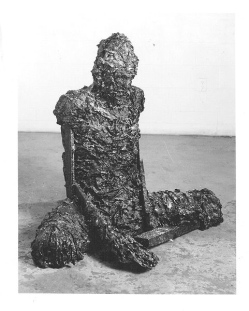Wabi-sabi, Mono no aware & creative ambiguity

Introduction
After last week’s post about designing opportunities for ‘creative ambiguity’ I had a brief Twitter conversation with @siibo about what exactly I meant. Which is kind of the point. :-p
The great thing that came out of it, however was being directed towards a couple of Japanese concepts of which I knew nothing previously, Wabi-sabi and Mono no aware.
Wabi-sabi
Wabi-sabi represents a comprehensive Japanese world view or aesthetic centered on the acceptance of transience. The aesthetic is sometimes described as one of beauty that is “imperfect, impermanent, and incomplete”. It is a concept derived from the Buddhist assertion of the Three marks of existence specifically impermanence . Note also that the Japanese word for rust is also pronounced sabi… and there is an obvious semantic connection between these concepts.
Characteristics of the wabi-sabi aesthetic include asymmetry, asperity, simplicity, modesty, intimacy, and the suggestion of natural processes.
To me wabi-sabi is a different concept than creative ambiguity. Whereas the former is ‘imperfect, impermanent and incomplete’, those terms and concepts that provoke creative ambiguity often claim to be perfect, permanent and complete.
If we use the concept of ‘Digital Natives’ as an example, we can see that this creatively ambiguous term is imperfect, impermanent and incomplete only in retrospect. Much like Kuhnian ‘normal science’, many latched onto the idea of Digital Natives in order to build an edifice that could be applied more universally. It was only when there were too many problems with the concept that a period of ‘revolutionary science’ began. I would argue that we are still in this revolutionary phase.
Whilst I would love to proclaim that everyone should embrace wabi-sabi, it flies in the face of western academia and cultural practices. Pragmatically, therefore, it would be better (to my mind) to make people aware of how creative ambiguity can be useful in a specified period of time.
Mono no aware
Mono no aware (…literally “the pathos of things”), also translated as “an empathy toward things,” or “a sensitivity of ephemera,” is a Japanese term used to describe the awareness of mujo or the transience of things and a bittersweet sadness at their passing.
People like the status quo, it makes them feel safe. To my mind, the reason why we don’t like endings and change is that it reminds us that we will all eventually die. This sadness is summed up very nicely in mono no aware.
Something that is central to creative ambiguity is its time-limited nature. What from a Pragmatic point of view is ‘good in the way of belief’ at one point in time may not be at another. We must be willing to let go of terms that have served us well but no longer have any cash value.
Conclusion
Whilst I used to be a ruthless believer in Occam’s Razor, I’m now of the opinion that there’s actually no long-term harm in allowing a plethora of terms to proliferate. In fact, the more the better. The best, most useful terms – those that actually have some explanatory power, are good in the way of belief, and have some ‘cash value’ should win out.
We just need to be aware that, as wabi-sabi teaches us, nothing will ever be anything other than imperfect, impermanent and incomplete. And, as mono no aware teaches us, we should not be sad when a term outlasts it’s value! 🙂
